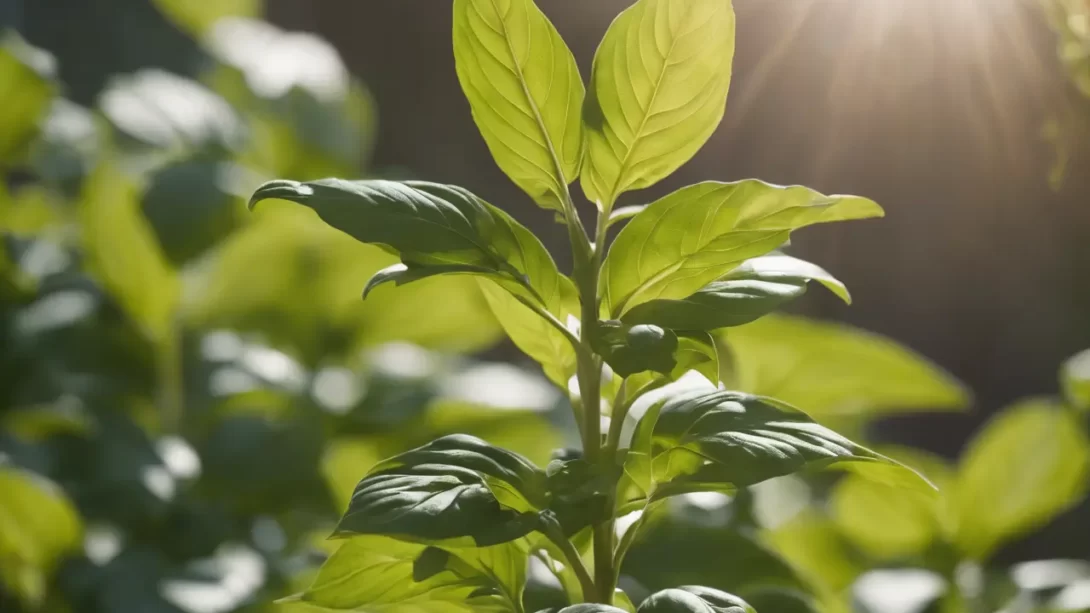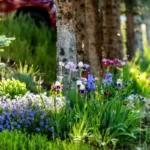Basil, a staple herb in culinary traditions worldwide, is also a favorite among gardeners for its aromatic leaves and ease of growth. A common question that arises is the importance of sunlight in cultivating healthy basil plants. Understanding the light requirements of basil is crucial for both novice and experienced gardeners to ensure a bountiful and flavorful harvest.
Basil Plant Requirements
Basil (Ocimum basilicum) is a herbaceous plant known for its fragrant, green leaves. It thrives in warm, temperate climates and is often grown as an annual. For optimal growth, basil has specific environmental needs, including temperature, water, and, importantly, light. Providing the right amount of sunlight is key to growing lush, healthy basil plants.
The Role of Sunlight in Basil Growth
Sunlight plays a critical role in the growth and health of basil plants. It is essential for photosynthesis, the process by which plants convert light into the energy they need to grow and produce leaves. Sunlight not only fuels this growth but also contributes to the development of the oils that give basil its distinctive aroma and flavor. Without adequate sunlight, basil plants may struggle to grow and lack the desired flavor profile.
Ideal Sunlight Conditions for Basil
Basil plants typically require about 6 to 8 hours of direct sunlight per day. The ideal conditions involve placing basil in a spot where it receives plenty of morning sunlight and some shade during the hottest part of the afternoon, especially in warmer climates. While basil can tolerate partial shade, prolonged exposure to weak or indirect sunlight may not be conducive to vigorous growth. Direct sunlight is particularly crucial for basil plants grown indoors, as window glass can filter out certain wavelengths of light that are important for plant health.
Signs of Insufficient Sunlight in Basil
Basil plants that do not receive enough sunlight exhibit several noticeable signs. One common symptom is leggy growth, where the plant becomes tall and spindly as it stretches toward the light source. The stems may appear weak, and the spacing between leaves can increase, resulting in a less bushy plant. Additionally, basil leaves may lose their vibrant green color, turning pale or yellowish, indicating a lack of sufficient light for photosynthesis. If these signs are observed, it is essential to adjust the plant’s exposure to sunlight to promote healthier growth.
Managing Sunlight Exposure for Basil
Achieving the right balance of sunlight for basil, particularly in indoor or shaded garden spaces, can be managed with some strategic planning. If growing basil indoors, place the plant near a south-facing window where it can receive the most sunlight throughout the day. For outdoor gardens in hot climates, using shading techniques during peak afternoon hours can protect basil from excessive heat while still providing adequate light. In scenarios where natural light is limited, such as in apartments or during winter months, artificial grow lights can be an effective alternative. These lights should be positioned close to the plants and left on for around 10-12 hours a day to mimic natural sunlight conditions.
Additional Care Tips for Healthy Basil Growth
Besides sunlight, basil plants require proper care in other areas to thrive. Regular watering is essential, but it’s important to avoid overwatering, which can lead to root rot. Basil prefers well-draining soil and can benefit from occasional fertilization, especially if grown in containers. Pruning and harvesting the top leaves can encourage bushier growth and prevent the plant from becoming leggy. By combining adequate sunlight with these additional care practices, gardeners can cultivate healthy, flavorful basil plants.
Additional Care Tips for Healthy Basil Growth
Beyond ensuring adequate sunlight, several other factors contribute to the overall health and productivity of basil plants. Watering plays a crucial role; basil prefers moist but well-drained soil. Overwatering or allowing the soil to dry out completely can be detrimental to the plant’s health. The type of soil used also impacts growth; basil thrives in rich, organic soil with a slightly acidic to neutral pH.
Fertilization is another important aspect, particularly for potted basil plants. A balanced, water-soluble fertilizer applied every four to six weeks during the growing season can promote vigorous growth. However, it’s important to avoid over-fertilizing, as this can lead to lush foliage with diminished flavor.
Pruning is beneficial for basil plants. Regularly pinching off the tips of the plant encourages a bushier growth habit and prevents early flowering, which can cause the leaves to become bitter. Removing any flowers that appear will help keep the plant’s energy focused on leaf production.
Conclusion
Understanding and meeting the sunlight needs of basil plants are fundamental to successful cultivation. While basil requires a good amount of direct sunlight, it also thrives with proper care that includes balanced watering, appropriate soil conditions, regular fertilization, and timely pruning. By providing these optimal growing conditions, gardeners can enjoy lush, flavorful basil throughout the growing season. Whether you’re growing basil in a garden bed or in a container on a sunny windowsill, attentive care will yield a bountiful harvest of this aromatic and versatile herb.




